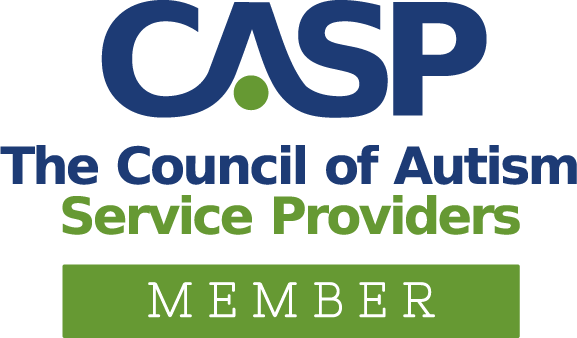How do you explain autism to a child?
Discussing autism and its implications can be a challenging task, especially after receiving a diagnosis for a loved one. This news often brings with it a wave of anxiety and a myriad of questions about the nature of autism and the subsequent steps to take. Many experts concur about the critical importance of discussing the diagnosis of Autism Spectrum Disorder (ASD) with your affected child, as not doing so increases the risk of anxiety, depression, and mental health issues.
At this point, a common question that arises among parents and caregivers is, “How do you explain autism to your child?” Recognizing this vital need, we at ABA Centers of America have meticulously developed a seven-step guide to aid you in discussing autism with your neurodivergent child. For more information about neurodiversity, check out our blog, which has valuable information for neurodiverse families in Massachusetts and New Hampshire.
Discussing Autism: 7 Effective Strategies
- Initiate Honesty-Driven Conversations: When discussing autism, the first step is to foster an environment of open and honest dialogue. Discussing the symptoms of autism helps to normalize the concept and address its impact on your child’s life and that of your family. Approaching the conversation with empathy can prevent young children from forming preconceived notions about autism.
- Encourage Continuous Dialogue: Explaining autism to a child is not a one-time discussion. It’s important to understand that numerous questions will arise, and the topic needs revisiting. Experts from the University of Washington recommend discussing autism continually and gradually as the child develops understanding and curiosity about new aspects. This approach makes your child feel comfortable bringing forward their queries and concerns.
- Leverage Support Tools: Visual aids like videos and books for children with autism are excellent tools for explaining autism. Many of these resources are crafted by neurodiverse authors, specifically for children with autism, often sharing inspiring stories that support dynamic discussions about autism.
- Highlight Diversity: In your conversations with your child, emphasize the existence of various brain types and diverse learning and developmental styles. Explain how monotonous life would be if everyone were the same. Discuss skills and activities that come naturally to neurodiverse individuals but might be challenging for others, such as building with Legos, memorizing, playing an instrument, or dismantling and reassembling objects. You can instill an appreciation for different brain types even before directly discussing your child’s diagnosis. For more information about brain types, you can take this test developed by neuroscientists, psychologists, and geneticists at Cambridge University.
- Foster an Understanding Environment: Discussing tasks that may be challenging for someone with ASD helps validate those difficulties and fosters understanding. Explain that specific tasks might be more challenging for them or that they might enjoy certain activities differently than others, and that’s perfectly fine. Assure them that other people, including yourself, have faced similar challenges and discovered alternative methods to make life easier and more enjoyable. Reinforce that their opinions matter, and you are always ready to help.
- Use Age-Appropriate Language: It is vital to use language that is appropriate for your child’s age and developmental level when talking about autism. Simplify complex concepts and provide examples for better comprehension. Use language that encourages a positive view of autism. For example, use the term “difference” instead of “disorder” to describe your child’s needs, as it sounds less stigmatizing and is easier for children to grasp. Emphasizing strengths over difficulties can also boost your child’s self-esteem.
- Customize Conversations to Your Child’s Needs: As previously mentioned, it’s vital to consider your child’s age, developmental level and needs when discussing autism. It would help if you tailored the conversations to the child’s experiences rather than being generic. Try to identify areas of interest and build on that motivation. You can even introduce autism role models to engage your child in conversation.
Choosing the Right Time for Explaining Autism to a Child
There isn’t a universally perfect time to explain autism to a child. However, it would help if you considered several factors, such as their chronological age, developmental stage, and interest in the topic. It’s crucial to ensure that your child comprehends the words you’re using while discussing autism.
When your child begins asking questions about their unique difficulties or interests, it’s likely a sign they’re ready to learn about their diagnosis.
When discussing autism with your child, it is essential to let them know that they have the option to keep this information private, choose who they share it with, and decide whether or not to use labels to describe themselves. Moreover, it would help if you recognized that while society is progressively advancing in its knowledge and acceptance of autism, many individuals remain uninformed about the condition and may misunderstand it.
Lastly, make sure to choose an appropriate time of day when explaining autism to your child. Having sufficient time to answer questions and facilitate a smooth conversation is vital.
ABA Centers of America and Autism Therapy
The neurodiversity journey can be complex and challenging but also rewarding and an opportunity to learn to see the world from different perspectives. At ABA Centers of America, we offer diagnostic, early intervention, and ABA therapy services for children, teenagers, and adults with autism spectrum disorder. Although receiving a diagnosis of autism may seem daunting, fortunately, Applied Behavior Analysis (ABA) is the gold standard approach that autism experts have studied and developed over the years.
This science- and outcome-based therapy has proven effective in understanding the behavior of people with autism and providing them with essential life tools and skills, allowing them to better integrate into society and strengthen their talents and interests.
With ABA therapy, individuals with autism can address their difficulties with the help of specialized autism care therapists and achieve their personal goals, whether it’s gaining independence, improving their communication skills, pursuing a career, gaining employment, and more.
To navigate neurodiversity with the proper support, we invite you to call us at (844) 923-4222 and schedule a free consultation or complete our online form.







